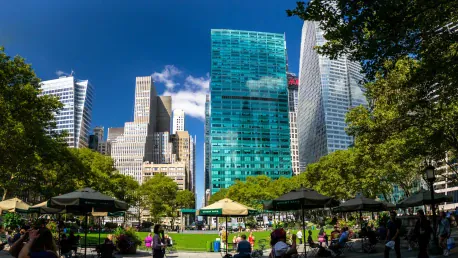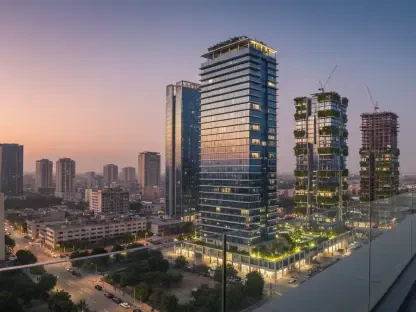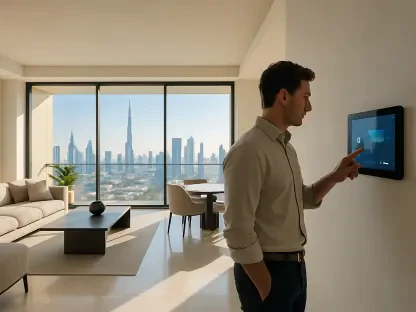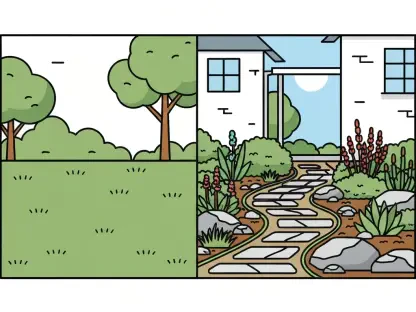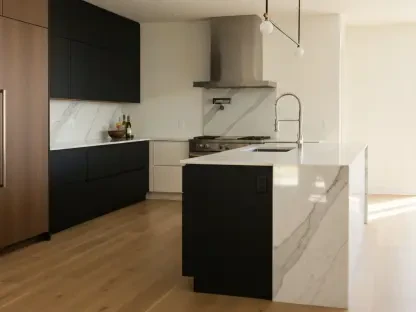As cities become denser and more industrialized, people are becoming increasingly disconnected from the natural environment. The rise of towering skyscrapers and the expansion of concrete jungles dramatically changed the landscape, most often at nature’s expense.
Biophilic design is bringing nature back into the urban space. It’s a very visually appealing architectural approach, one that benefits your mental and physical health by integrating natural elements such as greenery, water, and light.
In this article, we will take a look at the true essence of biophilic design, its benefits, and how it is shaping the way experts design future cities.
The Roots of Biophilic Design
Edward O. Wilson popularized the term ‘biophilia‘ (love of life) or (love of nature) in the 1980s. Wilson
says that humans are wired to the natural world and that this connection is crucial to our health. This concept of biophilia is what biophilic design builds upon, in architecture and urban planning, by using it to reconnect urban dwellers with nature.
Biophilic design, however, diverges radically from the mainstream scheme by emphasizing nature over the artificial and sterile. It’s not just about doing a little bit of planting or planting some green walls into a building; it’s about being mindful of how we can integrate natural elements like sunlight, air, water, and organic form into a building. Architects and urban planners are using these principles to improve more than aesthetics, the keyword here being functionality.
Key Elements of Biophilic Design
A biophilic design includes components that help create environments that resemble nature. These elements can be broadly categorized into three main areas:
1. Natural Light and Ventilation
The principle of maximizing natural light and ventilation is one of the most basic principles of biophilic design. There are large windows, skylights, open spaces, and lots of sunlight for an inviting and uplifted feel. Natural light has been shown to increase mood, aid productivity and regulate sleep cycles. Also, natural ventilation allows fresh air flow in the building, thereby helping to reduce the requirement for artificial climate control systems—enhancing indoor air quality.
2. Greenery and Plant Life
Perhaps the most recognizable feature of biophilic design is the incorporation of plants into urban spaces. Green walls, rooftop gardens, and indoor plants aren’t only decorations. They improve air quality, offset stress, and offer a calming environment. Studies have found that exposure to greenery can lower heart rates, reduce anxiety, and generally increase our well-being. Biophilic spaces—parks, plazas full of vegetation, and tree-lined streets—make cities more harmonious with nature.
3. Water Features
Water, or ‘blue space’ in biophilic design terms, has become increasingly common in modern urban environments. Architects and designers are looking to explore the benefits of using water in a way that is both soothing and dynamic. Be it a small indoor fountain, a reflecting pool, or a large body of water like a lake or a river, water features encourage relaxation, and increase the sensory impact of a space. For example, flowing water can drown out urban noise and give you a sense of tranquility.
The Psychological and Physiological Benefits of Biophilic Design
The idea of seeing the human connection to nature as an aesthetic preference is just that: An aesthetic preference. But the psychological and physiological impact on humans is just as profound. A growing body of research shows that including chunks of nature in built environments is good both for plants and for people. Let’s take a closer look at how.
1. Reduces Stress and Helps Mediate Mental Health
In modern urban life, we experience high levels and stress, anxiety, and even depression. Biophilic design is about integrating natural elements into everyday environments, in order to ease our mental health challenges. Research has found that access to greenery, natural light, and water has helped people respond with lower cortisol levels (the stress hormone). Meanwhile, studies show that a biophilic environment increases cognitive function and creativity, making them perfect for workplaces, schools, and public spaces.
2. Enhanced Physical Well-being
Biophilic spaces enhance physical health. For example, exposure to natural light will help you regulate your circadian rhythms more closely, which in turn means better sleep and more energy in the day. Not only that, but tenants in buildings that are well ventilated, and provide access to fresh air, are less likely to suffer respiratory problems caused by poor indoor air quality. Physical activity is encouraged through green spaces, such as walking or cycling, or just spending time outside—all important to overall fitness and well-being.
3. Community Building and Social interaction
People tend to gather in biophilic spaces, encouraging social exchanges and community bonding. There are public parks, rooftop gardens, green courtyards, and other places where people can find themselves connected in a natural setting and an open, relaxed environment. The communal element of biophilic design can help with both social cohesion and quality of life.
Real-World Examples of Biophilic Design
In cities all around the world, architects and urban planners are adding nature to their projects. Here are a few notable examples:
1. Bosco Verticale, Milan (Italy)
Milan’s Bosco Verticale, the pair of Residential towers known as the ‘Vertical Forest’ takes the biophilic approach to the highest of heights. These towers were designed by Stefano Boeri to be covered in 900 trees and 20,000 plants, making them a self-sustaining ecosystem. Not only does the greenery make the air cleaner, but it offers some insulation, lowering energy expenditure for heating and cooling.
2. Urban Nature in the Singaporean Approach
Singapore is a world leader in linking nature with its urban fabric. The city hosts numerous biophilic projects, including the widely acclaimed Gardens by the Bay—a 250-acre nature park with futuristic supertrees, flower domes, and man-made waterfalls. On top of that, the vast majority of the city’s buildings have green rooftops, vertical gardens, and natural ventilation, blending perfectly into the tropical landscape.
3. High Line (USA) (New York City)
A great example of how to turn an abandoned industrial space into a biophilic urban park is the High Line. High Line is basically an elevated railway line, a green corridor through the heart of Manhattan with native plants, public art, and places to sit. Visited by millions of people every year, this space offers a quiet refuge from the bustling streets below.
Conclusion
As cities grow, so too does the need for biophilic design. Recent years have seen more architects and urban planners increasingly understanding that nature should be integrated into the built environment not only for its aesthetic value, but also for the well-being of its inhabitants. With technology contributing to the expansion of biophilic design, new urban spaces could one day thrive in a symbiosis of nature and sustainability.
These spaces may feature smart building materials that mimic natural processes, like self-cleaning facades and air-purifying surfaces, that could become common. Further, developments in urban ‘farming’ and vertical ‘agriculture’ may allow cities to grow their own food in green spaces built within and among buildings.
Biophilic design provides a strong solution to the problems of urbanization by bringing nature back into city life. Understanding how to use this skill for good—to improve mental and physical well-being, foster social connection, and create more sustainable environments—is an essential trend for modern architecture.
